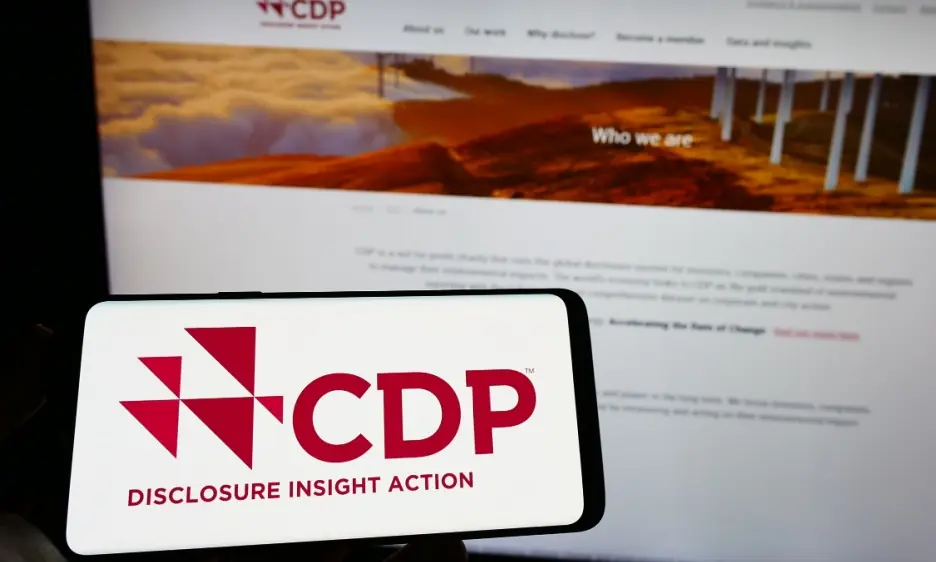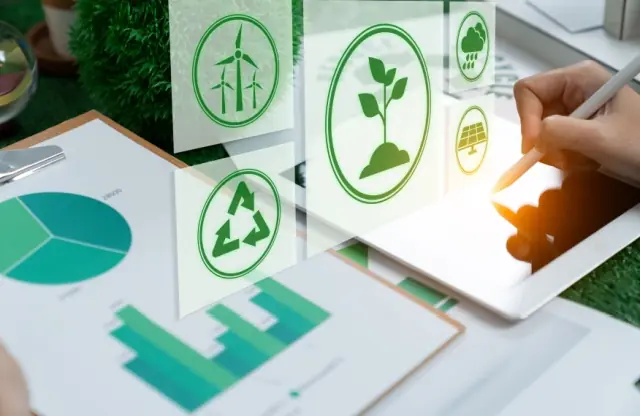CDP Updates: What’s the Latest for Global Corporate Reporting?
 Share
Share
 Copy Url
Copy Url

CDP updates guide companies representing diverse sectors towards a more earth-positive future. These new measures, introduced by the CDP (formerly known as the Carbon Disclosure Project), provide a clear framework for sustainability reporting. They also boost credibility and lower costs. By aligning with CDP updates, businesses can cut expenses and maintain statutory compliance. They can do so while responding to climate change and aiming for climate action. Many organizations see these steps as key to building a sustainable future. By using each reporting cycle to measure progress, they can reduce their environmental footprint and show genuine care for our planet.
This article explores the CDP’s Roots: How and Why It Began, Key Functions of the CDP, Recent CDP Updates You Should Know, and the Impact of CDP Updates on Global and Indian Businesses. It also explains how Report Yak can help you leverage these insights. These efforts open doors to funding and partnerships since many investors and consumers value transparent data on climate performance. Each section breaks down complex ideas into simple steps that reveal the CDP’s role in shaping earth-friendly practices. Together, they show how companies can grow while safeguarding the planet. You will also learn practical ways to adapt your reporting process for the future.

CDP’s Roots: How and Why It Began
CDP updates trace back to the early days of the Carbon Disclosure Project, which started in 2000. The Project was formed by a global network of investors. It aimed to promote transparent reporting of direct and indirect emissions. Today, it shapes sustainable business practices and drives climate disclosures worldwide.
Origins and Founding Purpose
CDP was officially launched in 2000 by a coalition of philanthropic groups and investor networks, led by Paul Dickinson. Its founding mission was to gather comprehensive environmental data from companies globally to address climate change. This data included emissions data linked to corporate operations and supply chains. Over time, the CDP expanded to embrace an ESG approach and supported a circular economy mindset. This growth guided many reporting frameworks, including alignment with the Corporate Sustainability Reporting Directive (CSRD) guidelines.
Why It Was Formed
- To reveal a company’s real environmental impact, so investors and the public could see the effects of everyday operations.
- To drive consistent tracking of business emissions, which helped measure carbon footprints on a global scale.
- To push firms to share vital data, so decision-makers could respond to emerging concerns.
- To promote uniform standards across sectors, encouraging a shared vision for better corporate responsibility.
- To serve as a foundation for future expansions, including CDP updates that refine disclosure practices for modern challenges.

Key Functions of the CDP
CDP updates illuminate how the Carbon Disclosure Project supports global business accountability. This section examines the organization's main tasks, from gathering climate data to guiding companies on improvement goals. It reveals how these functions shape transparency and inspire meaningful change.
Data Collection and Disclosure
CDP gathers environmental data from businesses across multiple sectors. This includes direct and indirect emissions linked to daily operations. This comprehensive approach captures detailed emissions data, water usage, and other factors that reveal a firm’s environmental impact. By sharing these findings, CDP discourages greenwashing and holds organisations accountable for their climate performance. The importance of the Carbon Disclosure Project lies in its public platform, which highlights both achievements and gaps. As a result, investors and stakeholders can evaluate ESG risk more clearly, ensuring a transparent global business environment.
Comparative Insights
CDP ranks companies based on ESG metrics, allowing them to compare performance and see the true impact of carbon emissions. By aligning reports with frameworks like the International Sustainability Standards Board (ISSB) and the Sustainability Accounting Standards Board (SASB), firms gain deeper insights into operational gaps and identify potential improvements. This scoring system encourages healthy competition among peers. Businesses see real benchmarks for success, inspiring them to learn from industry leaders. Over time, these insights foster continuous progress and reduce the risk of falling behind in an ever-changing market.
Helping Companies Set Targets
CDP helps businesses set measurable goals. These goals support a circular economy and reduce harmful outputs. By adopting a circular business model, organisations reuse resources and cut waste. This approach lowers costs and protects ecosystems. These targets include carbon reduction, water conservation, and other measurable aims. Meeting these objectives builds trust among stakeholders and enhances a company’s image. This proactive approach rewards firms with heightened investor interest and stronger market positions, reflecting the value of clear action plans and transparent accountability.
Additional Key Functions
Some industries face unique challenges, such as sustainability in the aviation industry, which depends on advanced solutions and closed loop systems. The CDP also promotes responsible resource use that supports long-term outcomes. By tracking progress through CDP updates, companies address potential pitfalls and keep pace with shifting regulations. They receive valuable guidance on better data management, risk assessment, and public engagement. This approach fosters continuous improvement and encourages broad participation in environmental initiatives. It also builds resilient supply chains that adapt to changing consumer expectations.

Recent CDP Updates You Should Know
New CDP updates reflect the importance of the Carbon Disclosure Project. They address the impact of carbon emissions and guide businesses toward accurate data. These changes reveal risks and opportunities, ensuring better regulatory compliance and more effective environmental action. Stay current on these CDP updates.
Updated Scoring Methodologies
- The CDP now requires a deeper look at direct and indirect emissions. This helps evaluate a company’s entire footprint and promotes better accountability.
- Companies receive higher scores if they plan each reporting cycle carefully. This approach highlights consistent data collection and ongoing improvements.
- Stricter benchmarks drive thorough assessment before final decision-making. Firms gain recognition by showcasing transparent methods for measuring carbon output.
- The CDP encourages companies to implement stronger water security measures. These steps include risk analysis and proof of resource-efficient operations.
Extended Reporting Areas
- Biodiversity management is now included alongside supply chain reviews. The CDP checks how firms guard habitats and preserve natural resources.
- Some disclosures track a circular business model, ensuring fewer raw materials go to waste. This approach encourages sustainable production and supports local ecosystems.
- CDP now covers forests and land resources, reflecting the importance of the Carbon Disclosure Project in broader environmental action. This focus highlights risks and opportunities in the value chain, helping companies gather accurate data and make better decisions.
- CDP goes beyond basic tracking to study how firms manage water in stressed regions. This supports regulatory compliance, maintains stable resources, and protects nearby communities.
- CDP emphasizes indirect outputs that lie outside a firm’s core operations, complementing its existing work on direct and indirect emissions. By reviewing the full reporting cycle, companies that follow these CDP updates implement targeted measures that reduce hidden pollution and build investor confidence.
Digital Transformation
The CDP now offers streamlined online portals that simplify data uploads. These systems reduce errors and speed up the review process.
Automated analytics tools give clear insights into environmental performance. They help companies spot trends quickly and make cost-effective improvements.
Below are a few examples of automated analytics tools that CDP uses or makes available to help organisations track and improve their environmental performance:
- CDP Reporter Services: Offers analytics, benchmarking, and visualizations of emission data.
- CDP Online Response System (ORS): Simplifies data submission and automates quality checks.
- CDP Supply Chain Analytics: Enables companies to assess suppliers’ environmental practices and spot improvement areas.
- CDP Benchmarking Tools: Provides comparative insights against peers, highlighting best practices in carbon management.

Impact of CDP Updates on Global and Indian Businesses
Recent CDP updates influence how businesses handle investor requests and adapt environmental disclosure strategies. This section explores global challenges and focuses on India, where companies must follow a reporting cycle to ensure regulatory compliance. Understanding these effects can improve financial decisions and boost market standing.
Global Effects
Firms worldwide must keep pace with new guidelines or risk losing key partnerships. Non-compliance can limit funding and growth. Many adopt strong social and governance practices, which build trust among investors. By emphasising better decision-making, they reveal progress and encourage more transparent reports. Some also implement advanced methods to track performance across borders, ensuring they meet global standards.
Focus on India and Indian-Owned Firms
In India, businesses find these CDP updates especially vital for global expansion. Meeting stricter rules can open doors to fresh collaborations and markets. Investors reward firms that show genuine commitment to climate goals, adding a competitive edge. By demonstrating real progress, Indian companies prove they can adapt quickly and attract valuable deals. This clarity also improves brand image, which fosters trust among international partners.

Leveraging CDP for Better Reporting with Report Yak
CDP updates become easier to handle with expert solutions from Report Yak. Their streamlined approach ensures high-quality data design. This design cuts reporting time and costs. It also promotes a holistic approach to disclosure, so organisations link environmental progress with financial decisions. The method supports a greener mindset, which appeals to investors in a global market. With clearer reports, leaders can enhance decision-making and gain trust from eco-conscious consumers.
Using Report Yak’s design expertise helps companies highlight their compliance with CDP updates. They present complex information visually and engagingly, helping stakeholders grasp key insights faster. This clarity boosts credibility and reduces confusion. It also confirms that organisations meet evolving standards and aim for a better future. The result is a well-organised report that draws attention locally and globally, reinforcing each firm’s commitment to sustainable progress.

Strengthen Your Business with Up-to-Date CDP Insights
Staying current with CDP updates is vital for any organization aiming to flourish in today’s eco-focused marketplace. By revisiting reporting practices, businesses can spot areas that need attention, streamline environmental disclosures, and stay ahead of changing global standards. Clear, consistent reporting meets statutory requirements while building trust among investors, partners, and consumers. This trust leads to stronger credibility, better market positioning, and lasting sustainability.
Professional guidance from Report Yak can make these disclosures more compelling and easier to grasp. Well-designed reports present key metrics that resonate with diverse audiences, highlighting achievements and future targets.
If you’d like to see how impactful these solutions can be, check out our Showcase to explore our work. For a personalized approach, call us at 1800 121 5955 (India), send a WhatsApp message, or email contact@reportyak.com. You can also fill in the Contact form on our website if that’s more convenient. Whether you operate locally or in a global market, our specialized services ensure your CDP updates align with best practices and stand out in a crowded landscape. By combining clarity with expert design, you can fortify your brand’s reputation and support a healthier planet.
Related Posts
-
How To Adopt BRSR Guidelines For Success
Oct 15, 2025Share
Copy Url
Simplifying ESG Disclosure for Better Impact
corporate reportingenvironmental and social initiatives
+6
Aug 28, 2025Share
Copy Url
GRI Sustainability Taxonomy: Learn How to Turn Data Into Advantage
corporate governancecorporate reporting
+11
Jul 1, 2025Share
Copy Url


